Fabric Types: The Ultimate Guide
What is Fabric?
Fabric is a material made from natural or synthetic fibers that are woven together to form a cloth. Fabric is produced by weaving, knitting, crocheting, knotting, or pressing fibers together. Fabric plays a crucial role in everyday life, being utilized in clothing, home furnishings, and countless other applications. Its versatility allows for the creation of diverse textures, patterns, and designs, suited for both functional and aesthetic purposes. Understanding the properties of different fabrics can be essential when crafting detailed and specific titles for creative projects, such as fashion collections, textile exhibitions, or design portfolios.
How is It Made?
The first step in making fabric is to harvest the fiber. This can be done either by shearing sheep or by extracting the fiber from plants. The harvested fiber is then cleaned and sorted.
The next step is to twist the fibers together to create yarn. Yarn can be made from a single type of fiber or a blend of different types of fibers. The yarn is then wound into balls or skeins for further processing.
The fabric is then woven on a loom. The weaver chooses the colors and patterns for the fabric and determines the size and shape of the finished product.
There are different types of fabric here are the most common and popular once
The Canvas Fabric
This fabric is normally very strong and durable. It’s made from an often Time Heavy-duty thread called ‘Cotton a Broder’. The Canvas has a truly unique texture and appearance.

Materials Needed for Canvas Fabric
- Cotton
- Linen
- Polyester
- Rayon
- Viscose
Uses of Canvas Fabric
- Upholstery
- Sails
- Backpack
- Heavy-duty Bags
- Totes
- Shoes
- Jeans
- Outdoor Nets / Hammocks
- Curtains
The Chiffon Fabric
The Chiffon fabric is made from either silk or rayon. It usually has a sheer appearance and feel, although thicker chiffons can be opaquer. Chiffon fabric often has a slub in the yarn. This gives it a bumpy texture and appearance.

Materials Needed for Chiffon Fabric
- Silk
- Rayon
Uses of Chiffon Fabric
- Blouses
- Formal Dresses
- Evening Dresses
- Chiffon Scarf
The Corduroy Fabric
The Corduroy fabric is a type of fabric with vertical ridges. The difference between corduroy and velvet is that the cords in corduroy are much larger than those found on velvet.

Materials Needed for Corduroy Fabric
- Cotton
- Wool and All kinds of fibers
Uses of Corduroy Fabric
- Suits
- Shirts
- Jackets
- Trousers
The Cotton Fabric
Cotton is very soft, absorbent, breathable, and comfortable against the skin. It’s what most of us think of when we hear the word “fabric.” Cotton is durable if treated properly after washing which makes it perfect for high traffic items like bedding, tablecloths, and upholstery. This fabric offers enough variety and flexibility to make best types of shirts.

Materials Needed for Cotton Fabric
- Cotton
Uses of Cotton Fabric
- Tablecloth
- Upholstery
- Bedding
The Denim fabric
Denim is a fabric in which the weft goes under two or more warp threads. This twill weave produces a diagonal ribbing that distinguishes most denim types from other cloths with a plain weave. Denim was originally dyed blue using indigo dye to produce blue jeans, work pants, overalls, and jackets, among other things. Like many other fabric types, these are also prone to shrink. So learning things like how much do American Eagle jeans shrink will come in handy. In addition to understanding denim’s unique construction, it’s important to be aware of how different treatments affect its longevity and fit. For instance, preshrunk cotton shrinkage explained can help consumers make informed decisions when purchasing denim products. By knowing how various brands handle pre-washing and treatment, shoppers can select jeans that maintain their shape over time.

Materials Needed for Denim Fabric
- Cotton
Uses of Denim Fabric
- Jeans
- Jackets
The Chenille Fabric
Chenille is a fabric with a pile or nap on one side, and it’s often referred to as chenille. Before being cut, tiny segments of yarn are woven through the warp and weft in this type of weave. The material is soft, velvety, and fuzzy.

Materials Needed for Chenille
- Cotton
- Wool
- Rayon
Uses of Chenille Fabric
- Clothing
- Upholstery
The Crepe Fabric
Fabric made from silk, cotton, wool, or synthetic materials is referred to as crepe fabric. It’s thin and light, making it ideal for dresses, blouses, and skirts. Crepe cloth has a textured finish that gives it a distinctive appearance and feel.

Materials Needed for Crepe
- Silk
- Cotton
- Wool
- Rayon
Uses of Crepe Fabric
- Different types of Clothing
The Damask Fabric
The Damask Fabric is one-of-a-kind and limited Danish fabric. The cloth’s excellent craftsmanship and luxurious touch make it ideal for both daily wear and special events.

Materials Needed for Damask Fabric
- Linen
- Cotton
- Silk
Uses of Damask Fabric
- Curtains
- Tablecloths
- Napkins
- Bed Sheets
- Clothing
- Accessories
The Georgette Fabric
Georgette fabric is a transparent, light polyester that has a soft, floating feel. It’s made of silk or rayon and can be used to make blouses, dresses, skirts, and scarves. Georgette drapes well and has an elegant sheen.

Materials Needed for Georgette
- Silk
- Rayon
Uses of Georgette Fabric
- Blouses
- Dresses
- Skirts
- Scarves
The Jersey Fabric
Jersey fabric is a kind of knitted cloth manufactured from cotton, wool, or polyester fibers. It’s smooth and flexible, making it ideal for T-shirts, sweaters, and other apparel.

Materials Needed for Jersey
- Cotton
- Wool
- Rayon
- Synthetic fibers
Uses of Jersey Fabric
- Clothing items such as T-Shirts and Sweaters
The Khaki Fabric
The term “khaki” refers to a fabric made of rugged, coarse cotton that features parallel ridges or welts down the length. This adds an individual texture and appearance to the material, making it distinct from other textiles.

Materials Needed for khaki
- Cotton
Uses of Khaki Fabric
- Clothings
The Lace Fabric
The lace fabric is a delicate, see-through material manufactured from cotton, silk, or artificial fibers. It’s frequently seen in clothes like blouses, dresses, and skirts. Lace has its own texture and style that distinguishes it from other textiles.

Materials Needed for Lace
- Cotton
- Silk
- Rayon
- Synthetic fibers
Uses of Lace Fabric
- blouses
- dresses,
- and skirts.
The Satin Fabric
This high-end cloth is composed of silk, cotton, wool, or synthetic fibers. It has a smooth, glossy finish and a little bit of stiffness to it. Satin is ideal for creating evening gowns, dresses, and other types of apparel.

Materials Needed for Satin
- Silk
- Cotton
- Wool
- Rayon
- Synthetic fibers
Uses of Satin Fabric
- Evening Gowns
- Dresses
The Taffeta Fabric
This dress is made of silk, cotton, wool, or a combination of those fabrics. It’s delicate and inflexible, making it perfect for skirts, dresses, and other kinds of apparel. Taffeta has a distinct texture that sets it apart from other silks.

Materials Needed for Taffeta
- Silk
- Cotton
- Wool
- Rayon
- Synthetic fibers
Uses of Taffeta Fabric
- Dresses
- Skirts
The Velvet Fabric
Cotton, silk, wool, or synthetic fibers are used in the manufacture of this sumptuous cloth. It has a soft and plush surface with a somewhat firm feel. Velvet is excellent for producing clothes such as jackets, coats, and robes because it is smooth to the touch.

Materials Needed for Velvet
- Cotton
- Silk
- Wool
- Rayon
- Synthetic fibers
Uses of Velvet Fabric
- Jackets
- Coats
- Robes
The Gingham Fabric
The fabric is composed of cotton, silk, wool, or polyester fibers. It’s thin and light, making it ideal for clothing such as dresses, tops, and skirts. The texture of gingham fabric is a little crinkled, giving it a unique look as well as feel.

Materials Needed for Gingham
- Cotton
- Silk
- Wool
- Rayon
- Synthetic fibers
Uses of Gingham Fabric
- Dresses
- Blouses
- Skirts
The Linen Fabric
Linen is a traditional material made from flax fibers that are ideal for creating clothing items such as shirts, pants, and skirts. Linen is both strong and long-lasting, yet it is gentle and pleasant to wear. However, they’re susceptible to shrinkage. Learning how to unshrink a linen dress will help you remedy the situation.

Materials Needed for Linen
- Flax fiber
Uses of Linen
- Clothing items such as shirts, pants, and skirts
The Polyester Fabric
This material is made of artificial fibers and is perfect for making clothing items such as tops, dresses, and pants. Polyester is a resilient and sturdy fiber that is also soft and comfortable to wear.

Materials Needed for Polyester
- Synthetic fibers
Uses of Polyester
- Blouses
- Dresses
- Pants
The Spandex Fabric
This fabric is composed of synthetic fibers and is ideal for producing clothing items like skirts, dresses, and pants. Spandex is both durable and comfortable to wear.

Materials Needed for Spandex
- Synthetic fibers
Uses of Spandex Fabric
- Skirts,
- Dresses,
- and Pants.
The Muslin Fabric
Fabric from cotton, silk, wool, or synthetic fibers is used to make this item. The muslin fabric has a crisply textured surface that adds character to the garment. The natural inspiration for textiles can be seen in the way that the fabric drapes and moves with the body, providing both comfort and style. The breathable qualities of muslin make it an ideal choice for warm weather clothing, as it allows air to flow freely through the fabric. Additionally, the natural fibers used to create muslin fabric are often more sustainable and environmentally friendly, making it a popular choice for eco-conscious consumers.

Materials Needed for Muslin
- Cotton
- Silk
- Wool
- Rayon
- Synthetic fibers
Uses of Muslin Fabric
- Dresses
- Blouses
- Skirts
The Organza Fabric
It’s made of silk, cotton, wool, or polyester fibers. It’s flimsy and translucent, it’s also frequently used in women’s clothing, particularly wedding gowns and other special occasion apparel.
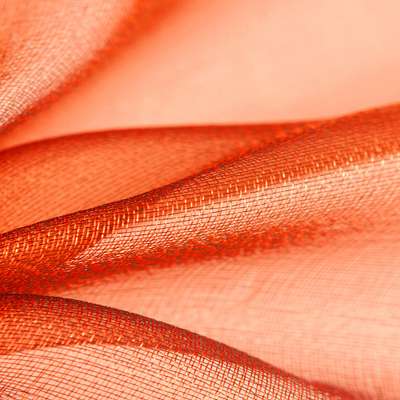
Materials Needed for Organza
- Silk
- Cotton
- Wool
- Rayon
- Synthetic fibers
Uses of Organza Fabric
- Wedding dresses
- Bridal gowns
- Special occasion clothing items
The Polyurethane Fabric
This synthetic textile cloth, for example, is perfect for making jackets and other outerwear pieces. Polyurethane is a strong and long-lasting material that is still smooth and pleasant to wear.

Materials Needed for Polyurethane
- Synthetic fibers
Uses of Polyurethane Fabric
- Jackets
- Coats
- Outerwear items
The Suede Fabric
Suede is a type of fake fur that’s commonly utilized to make jackets, coats, and other outerwear items. The soft, luxurious texture of suede feels wonderful against the skin.

Materials Needed for Suede
- Synthetic fibers
Uses of Suede Fabric
- Jackets
- Coats
- Skirts
- Dresses
- Pants
- Other outerwear items
The Toile Fabric
Cotton, silk, wool, or polyester are examples of the fibers used to make this cloth. It is thick and long-lasting, making it very well upholstery items as well as other house décor initiatives.

Materials Needed for Toile
- Cotton
- Silk
- Wool
- Rayon
- Synthetic fibers
Uses of Toile Fabric
- Upholstery items and other home decor projects
The Velour Fabric
The Velour fabric is a textile made from cotton, polyester, viscose, and sometimes wool. The material consists of 3 layers: the warp and weft are both made of cotton, while the pile surface is made from viscose.

Materials Needed for Velour
- Synthetic fibers
Uses of Velour Fabric
- Jackets
- Coats
- outerwear items.
- Skirts
- Dresses
- Pants
The Twill Fabric
The Twill is a diagonal weave; these are always woven using a “warp-faced” construction. This weaving process creates a subtle pattern of diagonal parallel lines known as the twill line, and this can be seen in most types of denim or gabardine fabric.

Materials Needed for Twill Fabric
- Cotton
- Silk
- Wool
- Rayon
- Synthetic fibers
Uses of Twill Fabric
- Jackets
- Skirts
- Dresses
- Pants
The Viscose Fabric
Viscose is a man-made fabric made by chemically treating natural cellulose. The result is very soft and highly absorbent, making viscose one of the most comfortable fabrics you can wear.

Materials Needed for Viscose
- Rayon
- Synthetic fibers
Uses of Viscose Fabric
- Blouses
- Skirts
- Dresses
- Pants
The Dimity Fabric
The dimity fabric is a type of lightweight cotton with a dull satin finish. The name refers to the plain weave, in which each weft thread passes over and then under two warp threads instead of going over one and then under one.

Materials Needed for Dimity
- Cotton
- Silk
- Wool
- Rayon
- Synthetic fibers
Uses of Dimity Fabric
- Blouses
- Dresses
- Pants
The Charmeuse Fabric
It is a type of weave that has a satin face and a woolly back. It is sleek, soft, smooth, and lustrous.

Materials Needed for Charmeuse
- Silk
- Cotton
- Wool
- Rayon
- Synthetic fibers
Uses of Charmeuse Fabric
- Skirts
- Dresses
- Pants
The Baize Fabric
The Baize fabric is a very coarse, napped woolen fabric, usually made in green and white or red and white stripes. It is used to make tablecloths or for lining billiard tables.

Materials Needed for BAIZE FABRIC
- Cotton
- Silk
- Wool
- Rayon
- Synthetic fibers
Uses of Baize Fabric
- Upholstery items and other home decor projects
The Drill Fabric
The drill fabric is made up of cotton and polyester. The cotton makes the fabric soft and comfortable to wear, while the polyester makes it durable and resistant to wrinkles. This fabric is perfect for shirts, pants, and skirts.
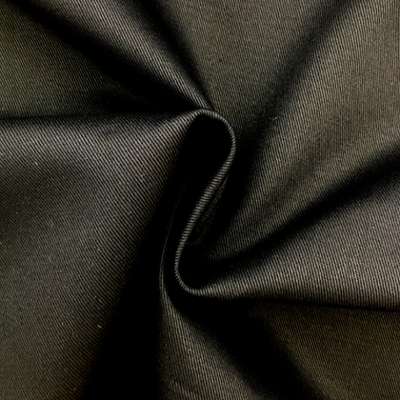
Materials Needed for Drill Fabric
- Cotton
- Silk
- Wool
- Rayon
- Synthetic fibers
Uses of Drill Fabric
- Skirts
- Dresses
- Pants
- Upholstery items and other home decor projects.
The Felt Fabric
The felt fabric is a type of fabric that is made from wool. It can be used for a variety of applications, including clothing, blankets, hats, and bags.

Materials Needed for Felt
- Synthetic fibers
Uses of Felt Fabric
- Jackets
- Coats
- Skirts
- Dresses
- Outerwear items
The Poplin Fabric
Poplin fabric is composed of two or more woven threads, simulating a twill but with the addition of decorative crosswise ribs. The thicker ribs are called Wales and usually range from 2 to 5 per inch. Poplin is a popular dress shirt fabric.

Materials Needed for Poplin
- Cotton
- Silk
- Wool
- Rayon
- Synthetic fibers
Uses of Poplin Fabric
- Shirts
- Pants
- Shirts
- Blouses
The Gabardine Fabric
Gabardine is a tightly woven fabric, most used for making suits or outerwear. The name comes from the fabric’s original use for raincoats. The fabric is tightly woven, like twill, but the yarns are combed before weaving to produce a smooth face.

Materials Needed for Gabardine
- Cotton
- Silk
- Wool
- Rayon
- Synthetic fibers
Uses of Gabardine Fabric
- Jackets
- Coats
- Skirts
- Dresses
- Pants
- Outerwear items
The Lycra Fabric
This fabric is popular because it is smooth and stretchable. The material is used for making yoga pants or leggings. It can also be used to make swimsuits, sports clothes, and running suits.

Materials Needed for Lycra
- Synthetic fibers
Uses of Lycra Fabric
- Shirts
- Blouses
- Pants
- Skirts
- Dresses
The Jute Fabric
The Jute Fabric is made from the fibers of jute plants. It’s an environmentally friendly fabric because it’s organic and biodegradable. It has a rough texture, but it gets softened with washing.

Materials Needed for Jute
- Natural fibers
Uses of Jute Fabric
- Bags
- Baskets
- Home decor projects
- Upholstery items
The Tissue Fabric
The tissue fabric is extremely soft and comes in a wide range of colors. It is lightweight and drapes well. This fabric has a relatively plain weave and tends to wrinkle easily.

Materials Needed for Tissue
- Natural fibers
Uses of Tissue Fabric
- Skirts
- Blouses
- Dresses
The Tricot Fabric
The Tricot Fabric is a fabric created from interlocking loops of material, typically made from cotton or nylon. It has a very soft feel, and since it does not fray, there is no need to hem the edges. This makes tricot perfect for creating baby clothes and linings in winter coats.
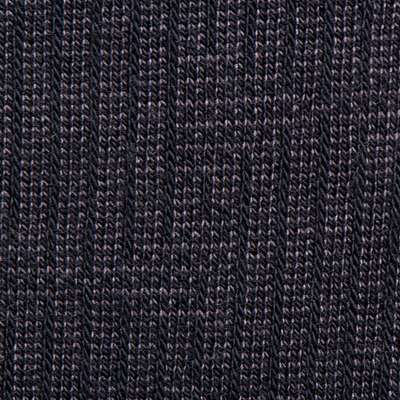
Materials Needed for Tricot
- Synthetic fibers
Uses of Tricot Fabric
- Shirts
- Blouses
- Pants
- Skirts
- Dresses
The Voile Fabric
Voile is a lightweight, sheer fabric that can be used for blouses, dresses, curtains, and other home decor projects. Voile is made with cotton, nylon, or polyester blended with either silk or rayon.

Materials Needed for Voile
- Cotton
- Silk
- Wool
- Rayon
- Synthetic fibers
Uses of Voile Fabric
- Blouses
- Dresses
- Skirts
- Curtains
- Home décor Projects
The Warp Knitted Fabric
The warp knitted fabric is made by interlocking the loops of yarn at right angles to each other. Warp knitted fabrics are strong, stretchy, thin, and crease-resistant.

Materials Needed for Warp
- Synthetic fibers
Uses of Warp Knit Fabric
- Shirts
- Blouses
- Pants
- Skirts
- Dresses
The Weft Knitted Fabric
This is a very popular class of fabrics in which warp yarns are interlaced with woof yarn. The most important property of the fabric is that it stretches transversely when subjected to traction.

Materials Needed for Weft
- Synthetic fibers
Uses of Weft Knit Fabric
- Shirts
- Blouses
- Skirts
- Dresses
- Pants
The Whipcord Fabric
The whipcord Fabric is a tough and tightly woven cotton cloth with diagonal ribs, making it very strong and slightly stiff. It is most commonly used for men’s trousers, shorts, jackets, and coats.

Materials Needed for Whipcord
- Synthetic fibers
Uses of Whipcord Fabric
- Jackets
- Coats
- Shirts
- Pants
The Terry Cloth Fabric
it is a plain weave fabric that has terry loops on one or both sides. It can be made from cotton, polyester, or other fibers. The use of this fabric includes making bathrobes and towels, among other things.

Materials Needed for Terry
- Cotton
- Silk
- Wool
- Rayon
Uses of Terry Cloth Fabric
- Towels
- Robe
The Tartan Fabric
Tartan fabric is made of interlaced fibers. It can be woven in several different ways to create a number of different patterns. Tartans are typically used for clothing and decorative items, but they can also be used as tablecloths or curtains.

Materials Needed for Tartan
- Artificial fibers
Uses of Tartan Fabric
- Skirts
- Blouses
- Dresses
- Skirts
The Stretch Fabric
The stretch fabric is the most common one. It fits according to your body shape. This type of fabric can be found in almost every wardrobe through pants, jackets, tops, etc. The stretch fabric is usually made of cotton, spandex, or any other material that can provide it with elasticity.

Materials Needed for Stretch
- Synthetic fibers
Uses of Stretch Fabric
- Shirts
- Blouses
- Skirts
- Dresses
- Pants
The Rib Stich Knit Fabric
This kind of fabric is perfect for making closets, bedding, drapes, and outdoor furniture. The Rib Stitch can be easily stretched because it has a great deal of natural give to it. It also works well in upholstery projects because it’s so durable and can stand light wear and tear.
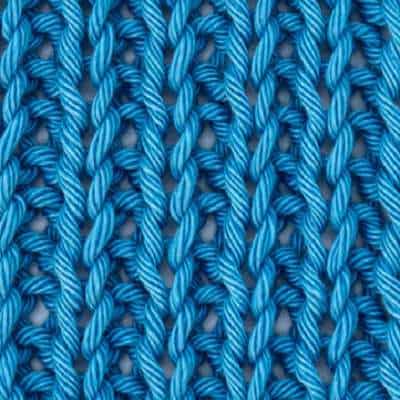
Materials Needed for Rib stitch
- Artificial fibers
Uses of Rib Stitch Knit Fabric
- Skirts
The Plisse Fabric
This fabric is made from artificial fibers. It is blouses a lightweight and delicate fabric that is perfect for making clothing items such as skirts. Plisse fabric has a crinkled surface and elastic texture.
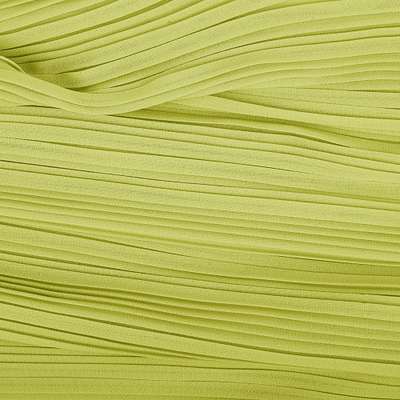
Materials Needed for Plisse
- Artificial fibers
Uses of Plisse Fabric
- Skirts
- Shirts
The Pinpoint Fabric
The pinpoint is a flat, finely woven fabric with a high-density weave. It has minimal stretch and is very strong. It is regularly used in shirts and suits because of its ability to go through the wash without losing form or color, but it can also be found in sleepwear.

Materials Needed for Pinpoint
- Cotton
Uses of Pinpoint Fabric
- Coats
- Pants
- Skirts
The Quilted Fabric
This type of fabric is used to make quilts. The unique stitching pattern on quilted fabrics makes them thicker than other types of fabric. Additionally, quilted fabrics offer a distinctive texture that enhances the overall aesthetic of the finished product. When choosing materials for quilting, it’s important to consider durability and comfort, making cotton and flannel among the best fabric options for quilt backing. These materials not only provide resistance to wear but also feel soft against the skin, ensuring the quilt is both functional and cozy.

Materials Neededed for Quilted
- Cotton
- Artificial fibers
Uses of Quilted Fabric
- Coats
The Purl Knitted Fabric
The Purl fabric is mostly seen in the form of sweaters. It’s a textured knit, with loops on one side and ridges on the other.

Materials Needed for Purl
- Cotton
Uses of Purl Knit Fabric
- Dresses
- Skirts
The Percale Fabric
This is one of the most common types of cotton fabric. It has a high thread count and a plain weave which gives it a crisp feel. Its smooth texture and durability make it a popular choice for a variety of garments, including shirts and dresses. Additionally, the properties of cotton fibers contribute to its breathability and ability to absorb moisture, ensuring comfort even in warmer climates. This versatility allows it to be easily dyed or printed, further enhancing its appeal in the fashion industry.

Materials Needed for Percale
- Cotton
Uses of Percale Fabric
- Sheets
- Pillowcases
The Pique Fabric
The Pique fabric is a lightweight, durable, and warm fabric that is produced by intertwining or binding weft and warp yarns into a strong cord.
It has a smooth surface and somewhat crinkled texture.

Materials Needed for Pique
- Cotton
- Artificial fibers
Uses of Pique Fabric
- Blouses
- Skirts
- Dresses
- Blouses
The Plush Fabric
The plush fabric is very soft and thick. It is often used for making high-end garments, upholstery, and hosiery. Sometimes they are made of wool or silk. This fabric is typically known as the type of fabric that is being used in making different types of mattresses.
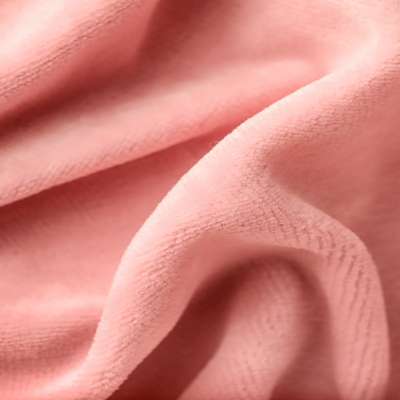
Materials Needed for Plush
- Cotton
- Artificial fibers
Uses of Plush Fabric
- Blouses
- Skirts
- Dresses
The Oxford Fabric
The fabric is characterized by a ribbed texture. It can also be made into multiple colors and patterns. Oxford fabric is mostly used to make shirts, sweaters, and jackets.

Materials Needed for Oxford
- Cotton
- Artificial fibers
Uses of Oxford Fabric
- Coats
- Pants
The Filter Fabric
This fabric is mainly used for liquid or gas filtration. It can also be used to make geotextiles, protective clothing, and air filters. This type of fabric is perfect for creating stylish apparel like skirts, outerwear, and blouses. It is often mixed with spandex to give the cloth more stretchiness.

Materials Needed for Filter
- Cotton
- Artificial fibers
Uses of Filter Fabric
- Blouses
- Skirts
- Dresses
The Fleece Fabric
The Fleece fabric is made by shearing sheep. Different breeds of sheep produce different types of fleeces. The most common type of this fabric is the greasy, which has bits of lanolin left on it. These are then washed out before processing to make the cloth.

Materials Needed for Fleece
- Cotton
- Artificial fibers
Uses of Fleece Fabric
- Pants
- Skirts
- Coats
The Flannel Fabric
It is usually made from cotton, wool, or synthetic and is woven into a checked pattern. This fabric can be very soft and warm and is often used for making shirts and pajamas. Flannel can also be mixed with other fabrics such as spandex to create swimwear and sportswear outfit.
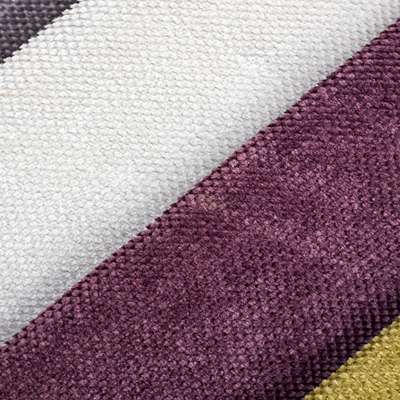
Materials Needed for Flannel
- Cotton
Uses of Flannel Fabric
- Blouses
- Skirts
- Dresses
The Fustian Fabric
A fustian fabric is made from cotton blended with linen. The material is durable but not as smooth to touch compared to other fabrics like satin or muslin.
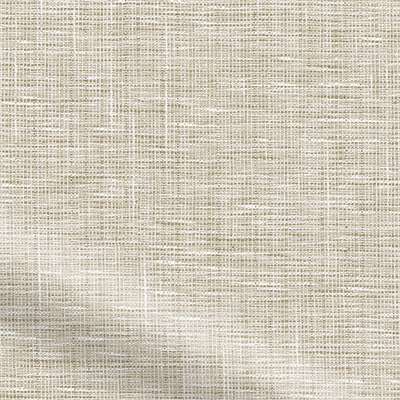
Materials Needed for Fustian
- Cotton
- Artificial fibers
Uses of Fustian Fabric
- Coats
- Pants
- Skirts
The Gauze Fabric
This fabric is made with very fine yarns of cotton, silk, or synthetic fibers. It is so light that it can be pulled through a small ring.

Materials Needed for Gauze
- Cotton
- Artificial fibers
Uses of Gauze Fabric
- Blouses
- Skirts
- Dresses
The Industrial Fabric
This fabric is quite durable and has a long life. It’s frequently utilized in the creation of uniforms, bedding, curtains, tents, and other products that need to withstand frequent usage.

Materials Needed for Industrial Fabric
- Cotton
- Artificial fibers
Uses of Industrial Fabric
- Blouses
- Skirts
- Dresses
The Interlock Knit Stich Fabric
This fabric is a looped, two-way stretch knitted fabric. It is made with a 1×1 rib knit construction. This means that each rib consists of a single horizontal and vertical yarn. The name interlock comes from the fact that the top loops from one stitch connect to the bottom loops of the next stitch.

Materials Needed for Interlock Stitch Knit Fabric
- Cotton
- Artificial fibers
Uses of Interlock Stitch Knit Fabric
- Blouses
- Skirts
- Dresses
The Jean Fabric
Jean is a sturdy cotton fabric with an uneven surface, which gives it its unique characteristic. It is often used to make casual clothing like jeans and jackets.

Materials Needed for jean
- Cotton
- Artificial fibers
Uses of Jean Fabric
- Coats
- Pants
- Skirts
The Jacquard Fabric
The Jacquard fabric is a type of brocade made with very fine imaginary or real woven designs, often on silk or linen.

Materials Needed for Jacquard
- Cotton
- Artificial fibers
Uses of Jacquard Fabric
- Blouses
- Skirts
- Dresses
The Kashmir Silk Fabric
This type of fabric has a unique character as it is thin and light as well as warm. It is one of the most expensive fabrics around because of its rarity and exoticness. The Kashmir silk cloths are also known as “red gold” for their color. Since it falls in the expensive category, you should use moth proof garment bags to store your clothes.

Materials Needed for Kashmir
- Cotton
- Artificial fibers
Uses of Kashmir Silk Fabric
- Blouses
- Skirts
- Dresses
The Khadi Fabric
It is a hand-spun and hand-woven fabric. It is also called khaddar. In Indian Subcontinent, this fabric has been used since ancient times. Different Types of Khadi Fabrics are available in the market with Different designs and Different Colors.

Materials Needed for Khadi
- Cotton
- Artificial fibers
Uses of Khadi Fabric
- Blouses
- Skirt
- Dresses
The Lame Fabric
This fabric is woven from metallic thread. It often looks exactly the same on both sides, and it has a very smooth surface. The Lame Fabric is used for evening dresses and gowns because of its luxurious look and feel.

Materials Needed for Lame
- Silk
- Artificial fibers
Uses of Lame Fabric
- Blouses
- Skirts
- Dresses
The Fiberglass Fabric
This fabric is very strong. It is often used in protective clothing because it has the ability to stop small particles from entering the wearer’s skin.

Materials Needed for Fiberglass
- Glass
Uses of Fiberglass Fabric
- Pants
- Skirt’s
- Coats
The Leather Fabric
The leather fabric is made of cowhide, goat, piglet, etc. Different kinds of animals provide different kinds of skins to create leather fabrics. The main thing in the construction is that it’s woven together and not knit like many cotton fabrics. Different types of leather fabric are also made by treating the skins.

Materials Needed for Leather
- Animal hide
Uses of Leather Fabric
- Coats
- Pants
- Skirts
Can Tetron Fabric Be Used as a Replacement for Cotton Fabric?
Tetron fabric is an increasingly popular alternative to traditional cotton fabric. It is made from a blend of polyester and cotton, making it more durable and wrinkle-resistant than cotton. The difference between Tetron and cotton is that Tetron has a greater strength-to-weight ratio, meaning that it is light yet strong; it is also highly resistant to shrinking, fading, and wrinkling. Additionally, Tetron has a smoother, silkier feel than cotton, so it can offer a more luxurious feel to any garment or product.
Tetron fabric is also a great choice for those looking for eco-friendly alternatives to cotton. It uses significantly less water, energy, and chemicals during production, making it a much more sustainable choice than traditional cotton fabric. Additionally, Tetron is hypoallergenic and can be used to create more comfortable, breathable items.
Overall, Tetron fabric has many advantages over cotton and can be used as a great replacement for traditional cotton fabric. It provides the same basic properties of cotton, while offering additional benefits such as greater strength, a smoother feel, and a more eco-friendly production process. For these reasons, Tetron is quickly becoming a popular choice for those looking for an alternative to cotton.
Is Baumwolle Fabric the Same As Cotton?
Baumwolle fabric is essentially cotton fabric. It is a type of textile fabric made from natural fibers found in cotton plants. It is lightweight, breathable, and has a soft, luxurious feel. The fabric is also highly durable and can last a long time when properly cared for. Baumwolle fabric is often used in apparel, bedding, towels, and other household items, as well as a variety of other textile products. Its popularity is due to its versatility and durability.
Are Linen and Wool Good Fabric Types for Suits and Overcoats?
Linen and wool are both excellent fabric types for suits and overcoats, as they provide superior warmth and comfort. While both fabrics are made from natural fibers, there are noticeable differences between wool and linen.
Wool is a long-lasting fabric that is naturally elastic, water-resistant, and heat-regulating. Wool also has a luxurious drape, providing a tailored fit that looks great in suits and overcoats.
Linen, on the other hand, is lightweight and breathable, making it a great choice for warmer climates. It is also naturally wrinkle-resistant and has a crisp, clean look that is well-suited for more formal occasions. Both fabrics are strong and durable and will last for many years if cared for properly.
Which Fabric Type is More Suitable for Active Wear: Nylon or Spandex?
When deciding between nylon vs spandex fabric for activewear, it’s important to consider the specific needs of the activity. Nylon is durable and moisture-wicking, making it great for outdoor activities. On the other hand, spandex provides excellent stretch and recovery, making it ideal for intense workouts and yoga.
Final Words
So here, you have finally gone through different types of fabric and their uses, along with the materials needed for each of them.
In this article, we only discussed the most common and popular fabrics that are in use around us. There is a lot more out there that we haven’t mentioned, but they aren’t as frequently used and therefore not very important to know about. We hope this article was helpful to you.
We have also covered how to cut sashing strips for quilts in another post. Do check that out if you’re interested.
Adios!

